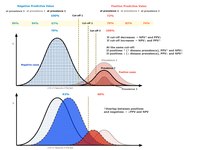
Photo from wikipedia
In clinical settings, false-positive results are treated as positive until bacterial identification. It may result in the discarding of blood products in blood centers or affect clinical decisions in hospitals… Click to show full abstract
In clinical settings, false-positive results are treated as positive until bacterial identification. It may result in the discarding of blood products in blood centers or affect clinical decisions in hospitals or testing facilities. Moreover, the management of these samples is usually time- and labor-consuming. The results of our study may help clinicians and laboratory staff in making a more precise evaluation of positive reactions in BacT/Alert. ABSTRACT The BacT/Alert system has been used for detecting the presence of bacteria in various clinical settings as well as in blood services, but it is associated with a relatively high incidence of false-positive results. We analyzed the results of our quality control sterility testing of blood products by BacT/Alert 3D to understand the mechanism of false-positive results. Anaerobic and aerobic bottles were inoculated with 10 mL of samples and cultured in BacT/Alert 3D for 10 days. Positive-reaction cases were classified as true positive if any bacterium was identified or false positive if the identification test had a negative result. The detection algorithm and the bottle graph pattern of the positive reaction cases were investigated. Among the 43,374 samples, 25 true positives (0.06%) and 29 false positives (0.07%) were observed. Although the detection algorithm of all true positives and 25 of 29 false positives was accelerating production of CO2, a steep rise in the bottle graph was observed only in the true positives, and it was not observed in either of the false positives. Four of 29 false positives were dependent on high baseline scatter reflections. Furthermore, evaluating the bottle graph pattern of Streptococcus pneumoniae, a bacterium known to autolyze, we confirmed that no viable bacterium was detected even if a steep rise was observed. In conclusion, the bottle graph pattern of positive reactions allows the differentiation between true positives and false positives. In case of a steep rise without bacterium detection, the bacterium might have autolyzed. Moreover, positive reactions with high baseline scatter reflections, despite immediate loading of bottles after sampling, are potentially false positive. IMPORTANCE In clinical settings, false-positive results are treated as positive until bacterial identification. It may result in the discarding of blood products in blood centers or affect clinical decisions in hospitals or testing facilities. Moreover, the management of these samples is usually time- and labor-consuming. The results of our study may help clinicians and laboratory staff in making a more precise evaluation of positive reactions in BacT/Alert.
Journal Title: Microbiology Spectrum
Year Published: 2022
Link to full text (if available)
Share on Social Media: Sign Up to like & get
recommendations!